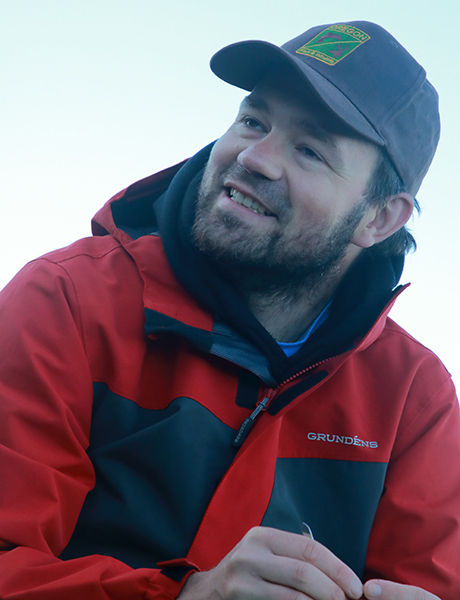
Oregon's Marine Reserves Program has a new ecological team leader whose past work includes finding ways to use facial-recognition technology to identify marine fish with video cameras and artificial intelligence. Dr. Moritz Schmid comes to the marine reserves from Oregon State University, where he was a researcher focusing on underwater camera systems and AI to better understand larval fish dynamics in the California Current off the Oregon coast.
While underwater cameras for ocean science have been developed since the late 1960s, their use was somewhat limited. In recent years, the development of new computer algorithms/AI has enabled scientists to make better use of camera footage by using facial recognition on marine organisms – ultimately giving way to a new approach to ocean monitoring. Schmid is looking forward to bringing together his background in nature conservation and ecology, coupled with his knowledge of the Oregon Coast's oceanography and statistics to address the program's goals.
"I like using new technologies to answer scientific questions we haven't been able to address before," Schmid said. "In the Marine Reserves Program, I can make a difference for the animals as well as the people," he said. The ecological team is responsible for the bulk of the research conducted in Oregon's five marine reserves. That ranges from hook-and-line surveys with volunteers to temperature and oxygen monitoring and other studies of the reserves' habitats, fish and invertebrates via SCUBA and remotely operated vehicles mounted with cameras.
Enacted by the Oregon Legislature in 2009, the Marine Reserves Program includes five actual marine reserves and nine protected areas that together cover nine percent of Oregon's near-shore ocean waters. The reserves, where no plants or animals can be removed and where development is banned, are underwater listening stations tracking ocean changes including fish, invertebrate and algal communities.
It is the first long-term nearshore ocean conservation and monitoring program run by the state of Oregon and includes cutting-edge research on the economic, social and cultural dynamics of the Oregon coast and coastal communities. The program is funded through state general fund dollars and not sport or commercial fishing fees. Dr. Moritz Schmid took over the ecological team-leader slot vacated when Marine Reserves Program Leader Dr. Lindsay Aylesworth stepped up to her current position last fall. Assistant Ecological Team Leader Stephanie Fields filled in on an interim basis.

.png)
Comments